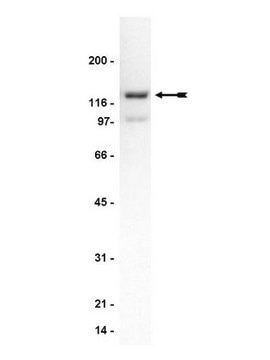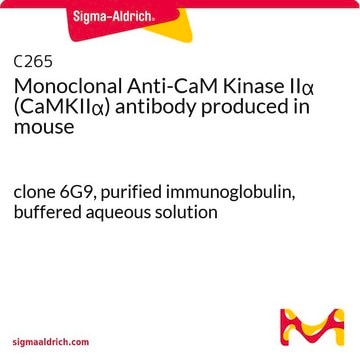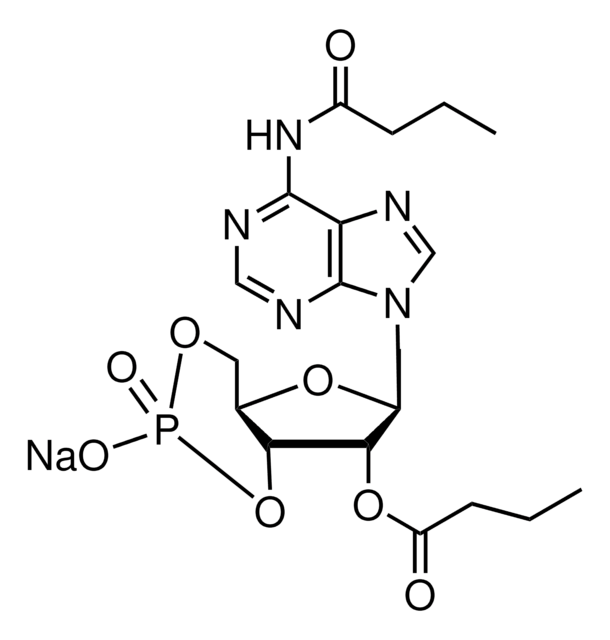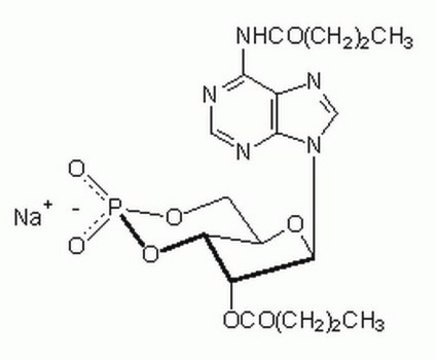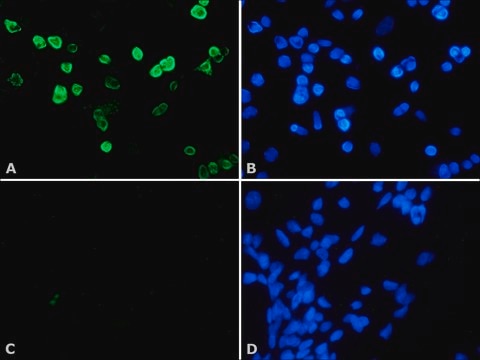AB5669
Anti-Spinophilin Antibody
Chemicon®, from rabbit
Synonym(s):
Neurabin-II
Sign Into View Organizational & Contract Pricing
All Photos(1)
About This Item
UNSPSC Code:
12352203
eCl@ss:
32160702
NACRES:
NA.41
Recommended Products
biological source
rabbit
Quality Level
antibody form
affinity purified immunoglobulin
antibody product type
primary antibodies
clone
polyclonal
purified by
affinity chromatography
species reactivity
rat
manufacturer/tradename
Chemicon®
technique(s)
western blot: suitable
NCBI accession no.
UniProt accession no.
shipped in
wet ice
target post-translational modification
unmodified
Gene Information
human ... PPP1R9B(84687)
Related Categories
Specificity
Spinophilin
Immunogen
Synthetic peptide from rat Spinophilin.
Application
Anti-Spinophilin Antibody detects level of Spinophilin & has been published & validated for use in WB.
Research Category
Neuroscience
Neuroscience
Research Sub Category
Synapse & Synaptic Biology
Neuronal & Glial Markers
Synapse & Synaptic Biology
Neuronal & Glial Markers
Western blot: 0.05 - 0.1 μg/mL using ECL on rat brain lysate. Reacts with a band of ~140 kDa.
Optimal working dilutions must be determined by the end user.
Optimal working dilutions must be determined by the end user.
Physical form
Affinity purified immunoglobulin. Liquid in 0.02M phosphate buffer containing 0.25M NaCl, pH 7.6 with 0.1% sodium azide.
Storage and Stability
Maintain at 2-8°C in undiluted for up to 6 months after date of receipt.
Other Notes
Concentration: Please refer to the Certificate of Analysis for the lot-specific concentration.
Legal Information
CHEMICON is a registered trademark of Merck KGaA, Darmstadt, Germany
Disclaimer
Unless otherwise stated in our catalog or other company documentation accompanying the product(s), our products are intended for research use only and are not to be used for any other purpose, which includes but is not limited to, unauthorized commercial uses, in vitro diagnostic uses, ex vivo or in vivo therapeutic uses or any type of consumption or application to humans or animals.
Not finding the right product?
Try our Product Selector Tool.
wgk_germany
WGK 2
flash_point_f
Not applicable
flash_point_c
Not applicable
Certificates of Analysis (COA)
Search for Certificates of Analysis (COA) by entering the products Lot/Batch Number. Lot and Batch Numbers can be found on a product’s label following the words ‘Lot’ or ‘Batch’.
Already Own This Product?
Find documentation for the products that you have recently purchased in the Document Library.
Spinophilin loss contributes to tumorigenesis in vivo.
Irene Ferrer,Sandra Peregrino,Marta Ca?amero,Yolanda Cecilia,Carmen Blanco-Aparicio,Amancio Carnero
Cell Cycle null
Micah A Shelton et al.
Biological psychiatry, 78(6), 374-385 (2015-03-31)
Microtubule-associated protein 2 (MAP2) is a neuronal protein that plays a role in maintaining dendritic structure through its interaction with microtubules. In schizophrenia (Sz), numerous studies have revealed that the typically robust immunoreactivity (IR) of MAP2 is significantly reduced across
Eva M Verdugo-Sivianes et al.
Oncotarget, 8(62), 105196-105210 (2017-12-30)
The scaffold protein Spinophilin (Spinophilin, PPP1R9B) is one of the regulatory subunits of phosphatase-1 (PP1), directing it to distinct subcellular locations and targets. The loss of Spinophilin reduces PP1 targeting to pRb, thereby maintaining higher levels of phosphorylated pRb. Spinophilin
Kisho Obi-Nagata et al.
Science advances, 9(23), eade5973-eade5973 (2023-06-09)
Human genetics strongly support the involvement of synaptopathy in psychiatric disorders. However, trans-scale causality linking synapse pathology to behavioral changes is lacking. To address this question, we examined the effects of synaptic inputs on dendrites, cells, and behaviors of mice
Melanie J Grubisha et al.
Proceedings of the National Academy of Sciences of the United States of America, 118(49) (2021-12-02)
Normally, dendritic size is established prior to adolescence and then remains relatively constant into adulthood due to a homeostatic balance between growth and retraction pathways. However, schizophrenia is characterized by accelerated reductions of cerebral cortex gray matter volume and onset
Our team of scientists has experience in all areas of research including Life Science, Material Science, Chemical Synthesis, Chromatography, Analytical and many others.
Contact Technical Service
